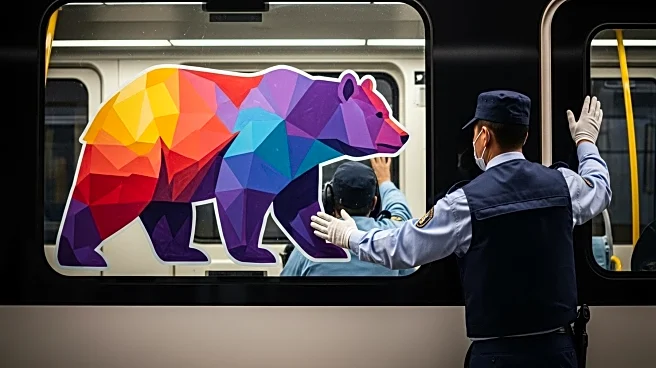What is the story about?
What's Happening?
Alex O'Keefe, a screenwriter for the Emmy-award-winning show 'The Bear,' was removed from a Metro-North train by MTA officers after a passenger complained about his seating posture. The incident occurred on a New Haven-bound train at the Fordham Metro-North station in The Bronx. O'Keefe was reportedly occupying two seats with his feet stretched across one of them, which led to a complaint from a fellow passenger. Despite being asked to exit the train, O'Keefe refused, resulting in a delay of service for several hundred riders. He was handcuffed and removed from the train but was not formally arrested. O'Keefe received a court summons for disorderly conduct and later boarded another train.
Why It's Important?
The incident has sparked discussions about racial dynamics and public conduct, as O'Keefe, who is black, claimed racial elements were involved in his removal. The event has gained significant attention on social media, with many users expressing outrage over his treatment. This situation highlights ongoing societal debates about race relations and the enforcement of public conduct rules. It also underscores the challenges faced by public transportation systems in managing passenger behavior while ensuring service efficiency.
What's Next?
O'Keefe is expected to appear in court to address the disorderly conduct summons. The viral nature of the incident may prompt further scrutiny of MTA's policies and procedures regarding passenger complaints and enforcement actions. Public reactions and discussions may influence future policy adjustments or training for MTA officers to handle similar situations more effectively.
Beyond the Headlines
The incident raises broader questions about the intersection of race and public authority, particularly in urban settings. It may lead to increased advocacy for racial sensitivity training among law enforcement and public service personnel. Additionally, the event could contribute to ongoing dialogues about the representation and treatment of minorities in public spaces.
AI Generated Content
Do you find this article useful?














